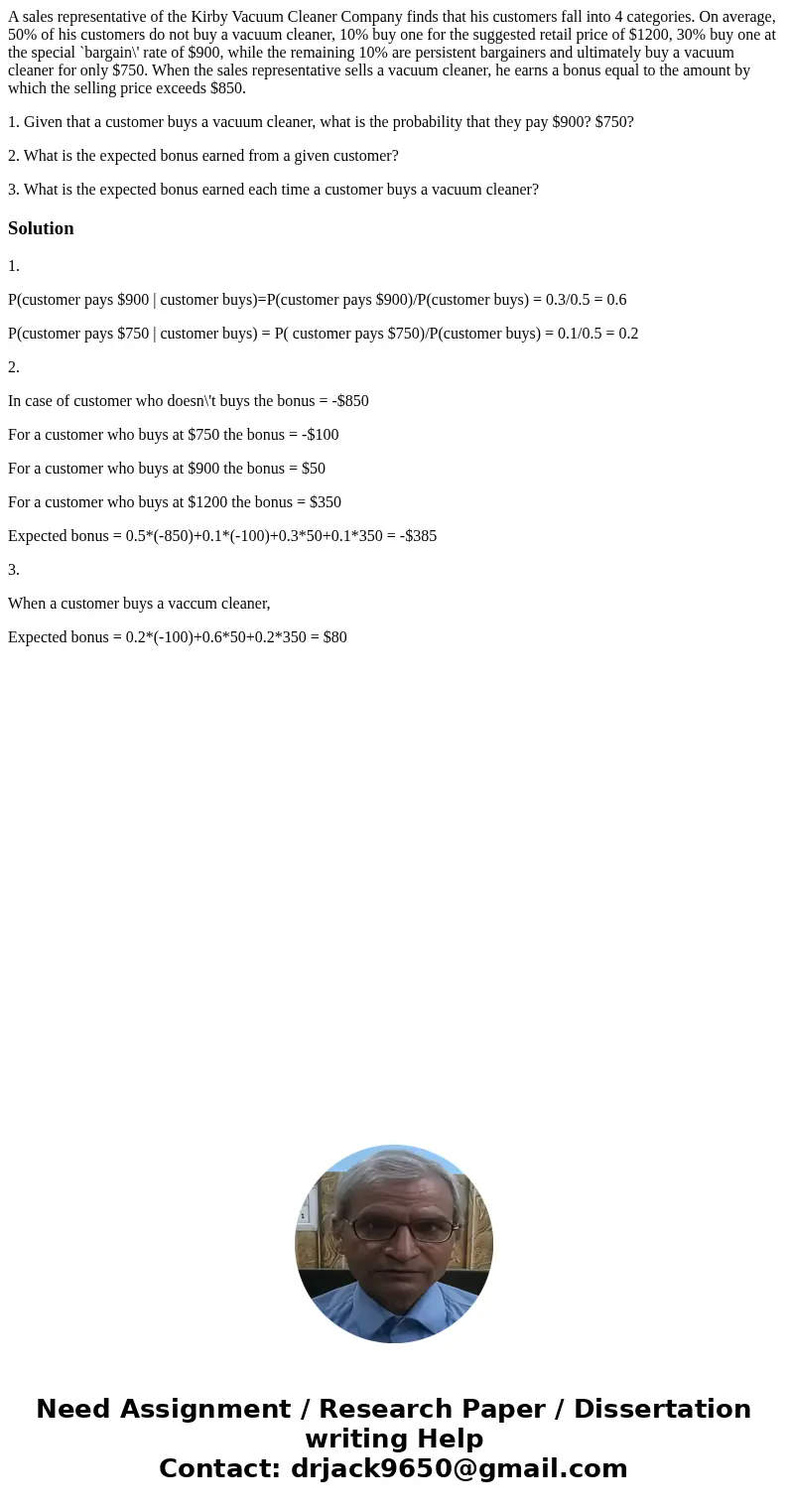A sales representative of the Kirby Vacuum Cleaner Company f
A sales representative of the Kirby Vacuum Cleaner Company finds that his customers fall into 4 categories. On average, 50% of his customers do not buy a vacuum cleaner, 10% buy one for the suggested retail price of $1200, 30% buy one at the special `bargain\' rate of $900, while the remaining 10% are persistent bargainers and ultimately buy a vacuum cleaner for only $750. When the sales representative sells a vacuum cleaner, he earns a bonus equal to the amount by which the selling price exceeds $850.
1. Given that a customer buys a vacuum cleaner, what is the probability that they pay $900? $750?
2. What is the expected bonus earned from a given customer?
3. What is the expected bonus earned each time a customer buys a vacuum cleaner?
Solution
1.
P(customer pays $900 | customer buys)=P(customer pays $900)/P(customer buys) = 0.3/0.5 = 0.6
P(customer pays $750 | customer buys) = P( customer pays $750)/P(customer buys) = 0.1/0.5 = 0.2
2.
In case of customer who doesn\'t buys the bonus = -$850
For a customer who buys at $750 the bonus = -$100
For a customer who buys at $900 the bonus = $50
For a customer who buys at $1200 the bonus = $350
Expected bonus = 0.5*(-850)+0.1*(-100)+0.3*50+0.1*350 = -$385
3.
When a customer buys a vaccum cleaner,
Expected bonus = 0.2*(-100)+0.6*50+0.2*350 = $80

 Homework Sourse
Homework Sourse